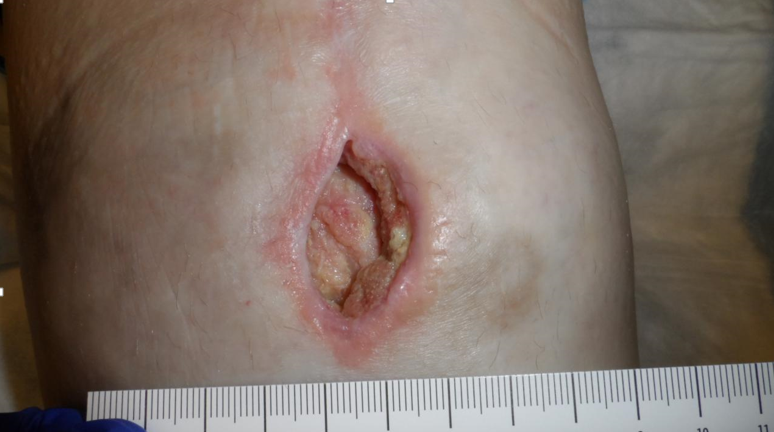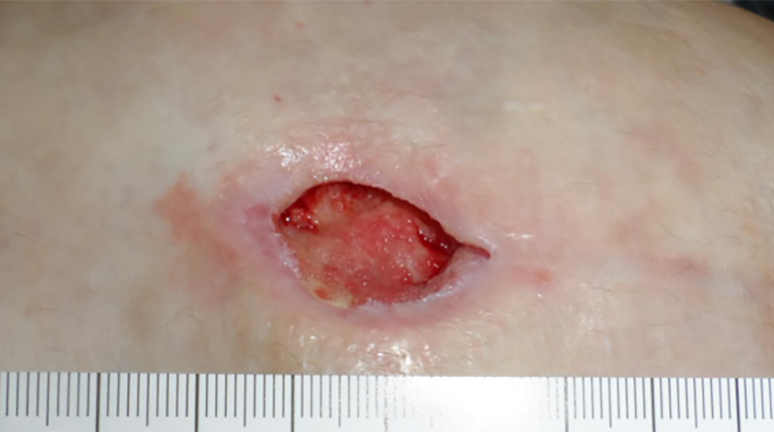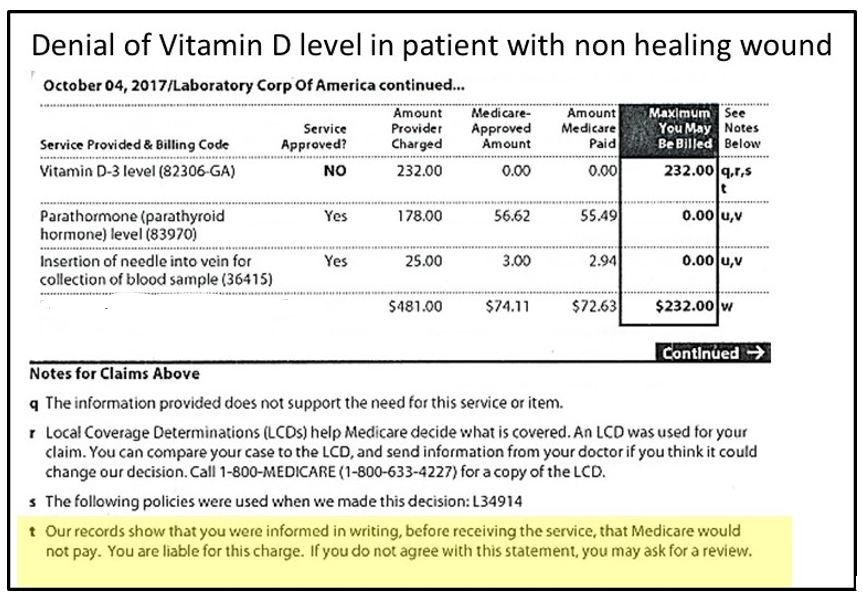This case has special significance since an analysis of Medicare claims published by the Alliance of Wound Care Stakeholders shows that surgical dehiscence is the most common chronic wound and the costly type of chronic wound among Medicare patients in the USA. It makes me cringe to think of how many millions (billions) of dollars we might be spending to care for wounds that could be avoided by some cheap, preoperative Vitamin D.
But, there is one little problem. Everyone says we should obtain Vitamin D levels since D is one of the fat soluble vitamins on which it’s possible to overdose (the fat soluble vitamins are A, D, E and K). Here’s an excerpt from the letter that one of my patients with a non-healing surgical wound received from Medicare after I checked her Vitamin D level and found that it was critically low. It reads, “Our records show that you were informed in writing, before receiving this service, that Medicare would not pay. You are liable for this charge.” Wow, thanks CMS! I just figured out the reason this woman’s wound had not healed for 6 months, and I felt like the smartest doctor in the world, and you sent her a letter that I was a schmuck. That’s the way to improve patient experience of care for sure. The diagnosis of a chronic ulcer or complication of surgery is NOT a covered code for a Vitamin D level. What’s wrong with this picture?

Knee before Vitamin D

Knee after Vitamin D

Dr. Fife is a world renowned wound care physician dedicated to improving patient outcomes through quality driven care. Please visit my blog at CarolineFifeMD.com and my Youtube channel at https://www.youtube.com/c/carolinefifemd/videos
The opinions, comments, and content expressed or implied in my statements are solely my own and do not necessarily reflect the position or views of Intellicure or any of the boards on which I serve.



